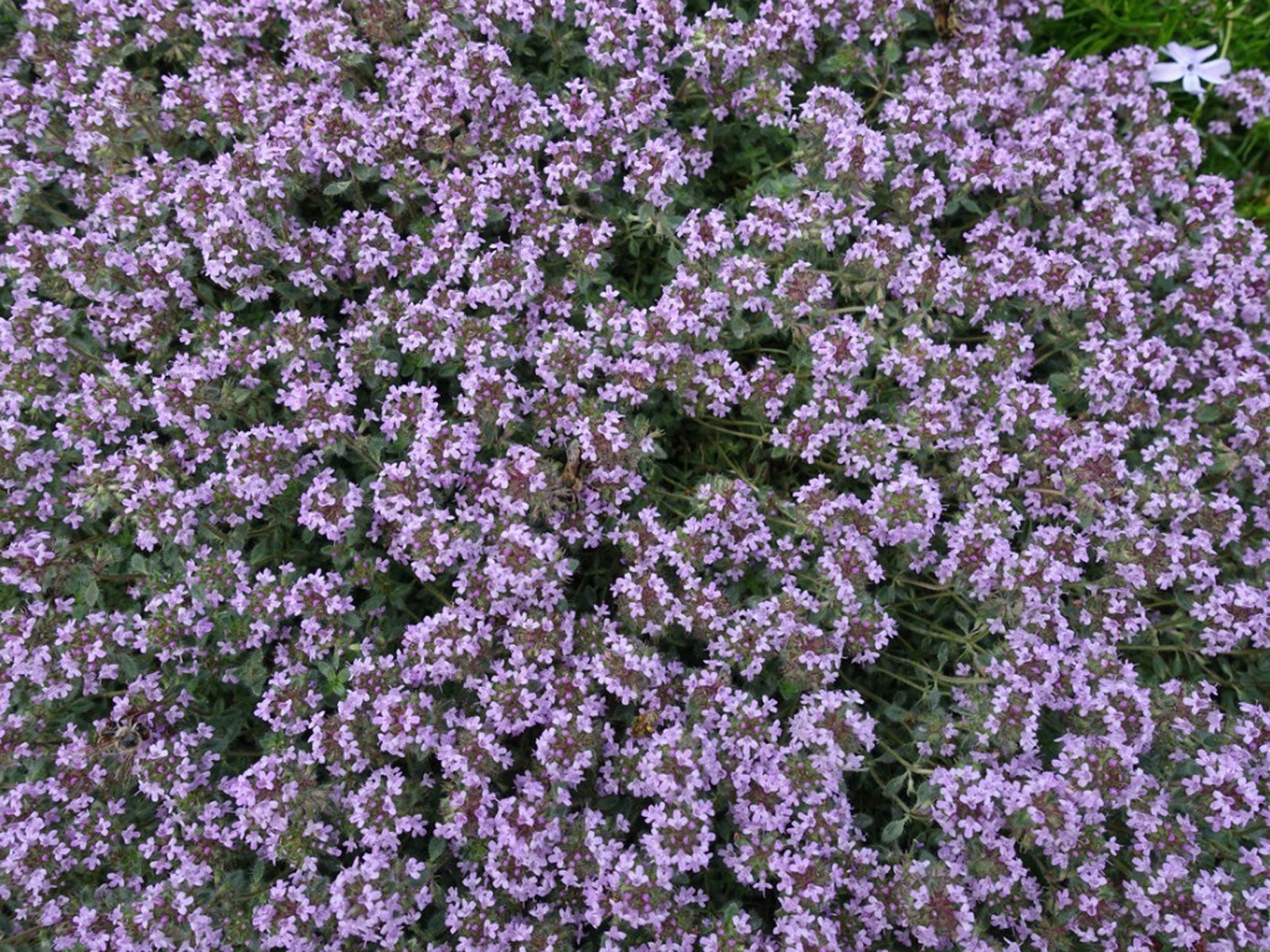
Choosing the right locationĪll thyme love a sunny spot in a dry, not too nutrient-rich soil - cushioned thyme are of course no exception. You need between seven to ten thyme plants per square meter, this corresponds to a planting distance of between 20 and 25 centimeters.

Also, plant them through a plastic mulch - such as a plastic tarpaulin perforated at regular intervals - and hide them with gravel you can already reduce your garden weeds to a minimum and give your young plants a valuable growth advantage.

However, you need to give the ground-covering thyme plants you want a head start: plant the plants in previously thoroughly tilled, weed-free soil. Ground covers are competitors of weeds and are therefore effective weed control. Atropurpurea (lush purple flowers) or Minor (particularly flat and hard-wearing)
#Photos of wild thyme ground cover l full
Thyme mats look particularly pretty between June and July, when the plants are in full bloom and form a thick, fragrant carpet of flowers. Just like conventional thyme types, upholstered thyme can also be used in the kitchen and as a medicinal herb. Over time, the fast-growing plants develop real mats that are almost impenetrable. The different types of cushion-forming thyme usually remain quite low and reach heights of between two and ten centimeters.

Is the Mühlenbeckia suitable as a ground cover?.This type of ground cover keeps the weeds out and thus considerably reduces the workload for the borders. For this reason, modern gardeners find it more sensible to let groups of plants merge into one another and thus create a green ceiling. However, since bare earth usually does not stay bare, such a garden is a paradise for wild weeds and therefore very labor-intensive. Numerous cultivars of this species have been described, featuring plants of varying sizes (creeping to upright), varying flower colors (white, pink, red or purple), and varying foliage colors (dark green to gold to variegated).It used to be considered aesthetic to grow each plant in the border with some space around it, that is, as an individual. Specific epithet from Greek means creeping in reference to the trailing growth habit of this species. Genus name comes from the Greek word thymos (name used in ancient Greece for a species of Thymus or Satureja). Dense inflorescences (primarily terminal but sometimes axillary) of tiny, tubular, bell-shaped, two-lipped, deep pink to purple flowers appear in summer (June-September) on erect flowering stems rising 2-4” tall.

Although leaves are aromatic (fragrance of mint), strength of scent varies according to season and habitat, and leaves are usually not considered to be of culinary quality. Numerous, thin, somewhat woody, prostrate stems clad with tiny, opposite, oval-rounded, pubescent, almost sessile, glossy blue-green leaves (to 1/4” long) form a flat foliage mat to 2-3” tall which will spread over time by rooting stems to 12-18” wide. Wild thyme is native to Europe, western Asia and northern Africa. It is rarely used in cooking ( Thymus vulgaris is the culinary thyme most commonly used in cooking). Thymus serpyllum, commonly called wild thyme, creeping thyme or mother-of-thyme, is a hairy, prostrate, creeping, woody-based perennial which is primarily grown as an ornamental ground cover.


 0 kommentar(er)
0 kommentar(er)
